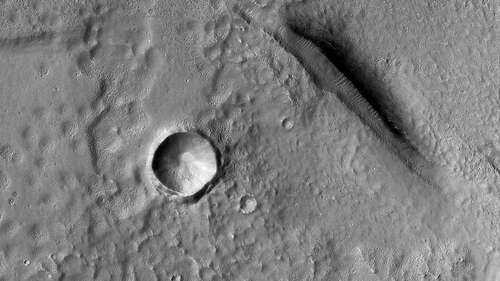
Dozens of meters below the equator of Mars, researchers have discovered a pattern of honeycomb-shaped fractures appreciate the one seen above. Captured with radar instruments on China’s Zhurong robotic rover, each polygon crevasse is about half the size of a football field.
According to scientists, the 2-to-3.5-billion-year-old features are the “most compelling evidence to date” that Mars once tilted on its axis much more than it does today. It’s also “fresh evidence that the Red Planet once hosted water and a friendly climate to life as we know it,” reports Space.com:
On Earth, similar patterns are known to form only in Greenland, Iceland and Antarctica when drastic temperature dips caused by seasonal changes contract and fracture the ground. Ice and mud that sometimes fill these cracks stops them from ever healing, causing the surface to eventually split advance. A similar process on Mars, some 2 billion to 3.5 billion years ago, would have caused the newly detected crevasses, which are tens of meters larger than any found on our planet. “These polygons are huge,” said [Chinese Academy of Sciences geophysicist Lei Zhang…]
Mars’ tilt has been known to vary more than Earth’s does, having shifted by more than ten degrees over 100,000 years. In fact, that change is what scientists believe caused such dramatic changes to its climate, turning it from a once-blue oasis to the arid red land we presently see. But the newly detected polygon pattern could help scientists narrow down exactly when those drastic climate changes occurred, said Zhang.

